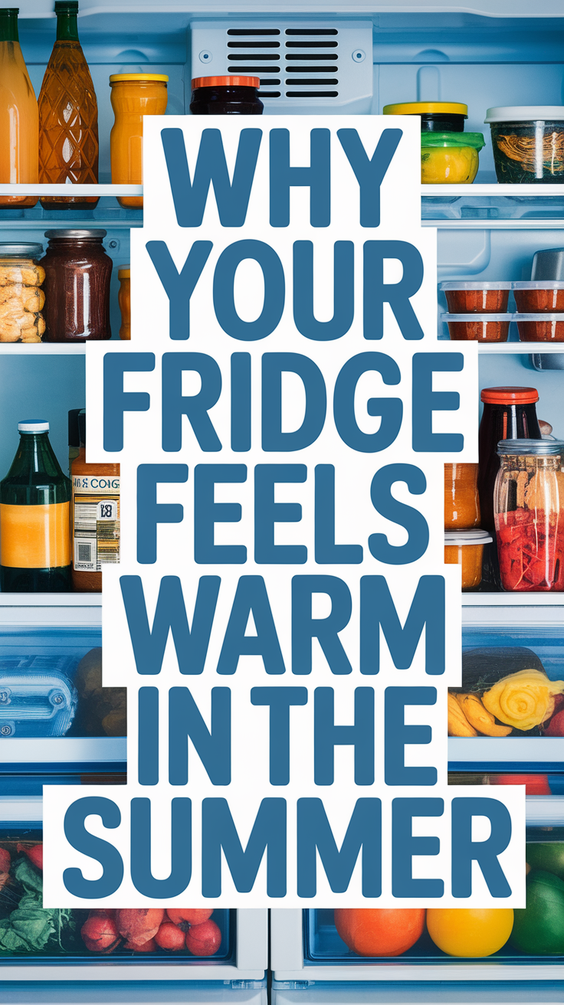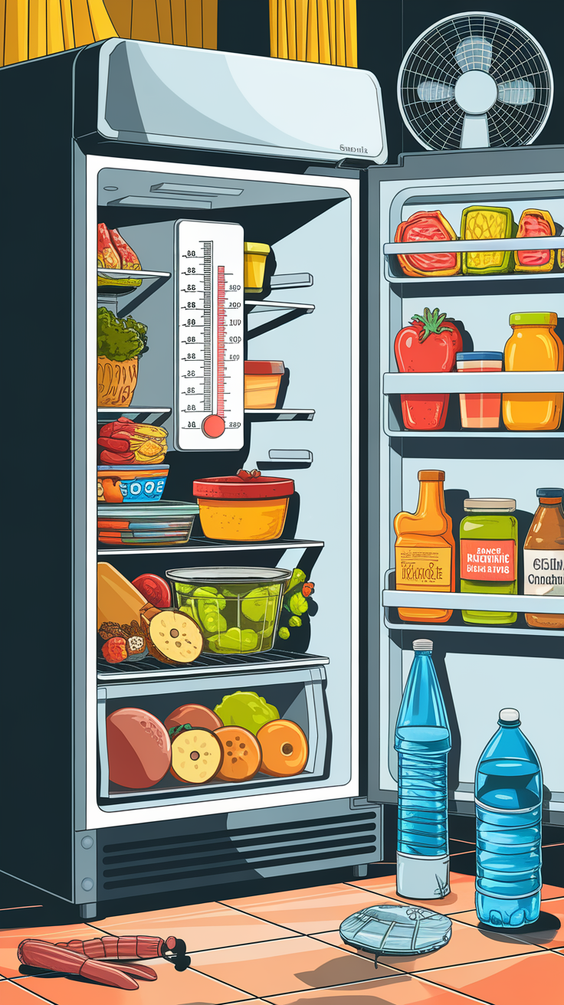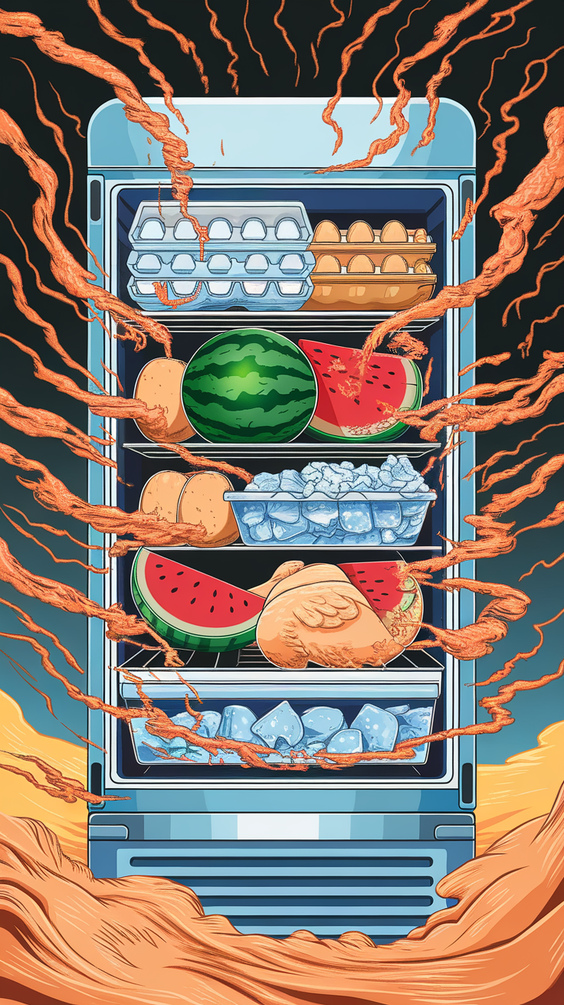Why Your Fridge Feels Warm in the Summer — Expert Guide for 2025

Have you found your fridge feeling warmer on the outside in the summertime? You’re not wrong—and sometimes it’s not because your refrigerator is broken. In truth, this change in temperature happens more often than you might realize. But knowing why it happens (and what to do about it) can save your food—and your sanity.
We’ll explain in this guide why your refrigerator might be too hot, when it’s normal, when to worry and how to fix or prevent it from overheating. If you’ve noticed that your fridge doesn’t seem as cold as it used to, keep reading.
Who should read this? Anyone who wants to keep their food fresh in the hot summer months, as well as homeowners, renters and DIYers. Let’s get started!
Is It Normal for Your Fridge to Feel a Little Warmer in Summer?
Yes—within reason. When it’s hot outside, a fridge must work harder and this produces extra heat on the sides or back. Since most fridges release warm air to cool the inside, a little heat is normal.
If your appliance is warm to the touch, your food is not as cold as it should be or you hear unusual sounds, it could mean there is a problem. Let’s break down why this happens.
Key Factors That Cause Your Fridge to Warm Up
High Ambient Room Temperatures
As the temperature in the kitchen rises above 80°F, your fridge’s compressor has to work harder. If your home isn’t well insulated, your appliances will likely get warmer.
Poor Ventilation Behind or Beside the Fridge
Fridges need space to breathe. If your TV is up against a wall or next to closed cabinets, it will have trouble letting heat escape. That trapped warmth leads to reduced efficiency and overheating.
Frequent Door Openings
Every time you open the fridge, warm and humid air can get inside. The compressor keeps turning on and off to cool the inside which adds heat to the outside air.
Clogged Condenser Coils or Dirty Vents
A buildup of dust on the coils slows down the heat release in your fridge. A buildup of dirt on the coils, whether on the back or bottom, makes the unit work harder and increases the temperature inside and outside the home.
How Refrigerator Design Affects Summer Performance
Older vs. Newer Models
Fridges from the past are usually not as energy efficient as those made today. They tend to struggle more in high heat.
Top Freezer vs. Bottom Freezer Efficiency
Because of their design, bottom-freezer models usually distribute heat more effectively. Near the compressor base, top-freezers can feel slightly warmer.
Single vs. Dual Evaporator Systems
In summer, it’s better to use a fridge with two evaporators for the freezer and fridge sections. They manage humidity and temperature independently, avoiding extra load.
External Heat Sources That Worsen the Problem
Where you place your fridge matters.
-
Next to the stove or oven? Constant exposure to cooking heat.
-
By a sunny window? UV rays add warmth to the outer shell.
-
Under a microwave? Appliances stacked above can block vents.
Even a few degrees of added external heat can tip the balance.
Signs Your Fridge Is Too Warm (And Not Just Summer)
Think your fridge is just “a little warm”? Watch for these red flags:
-
Food spoils faster than expected
-
Ice cream feels soft or starts melting
-
Water pools at the bottom of the fridge
-
The fridge exterior feels hot to touch
-
Compressor never seems to stop running
These signs could point to malfunction—not just seasonal stress.
Best Ways to Prevent Fridge Overheating in Summer
Here’s what you can do right now to stop the warm-up:
1. Improve Airflow Around the Unit
-
Keep 2–3 inches of space around all sides
-
Avoid pushing it into corners or recesses
2. Clean the Coils and Vents
-
Unplug and vacuum the coils every 6 months
-
Wipe dust off lower and rear vents
3. Check and Replace Door Seals
-
Close the door on a dollar bill—if it slips out, the seal is weak
-
Replace worn rubber gaskets to trap cold air in
How to Adjust Fridge Settings During Heat Waves
In extreme heat, your default fridge setting might not cut it. Try this:
-
Set fridge temp to 37°F (3°C)
-
Set freezer to 0°F (-18°C)
-
Avoid overpacking—allow air to circulate
-
Never place hot food directly inside
These steps give your appliance room to breathe and recover.
Simple Summer Maintenance Checklist for Your Fridge
| Task | Frequency |
|---|---|
| Clean condenser coils | Every 6 months |
| Check door seals | Monthly |
| Vacuum floor vents | Monthly |
| Verify internal temp with thermometer | Weekly |
| Inspect for unusual sounds or heat | Weekly |
Stay ahead of problems with routine care.
When to Call a Technician — Warning Signs
Not every fridge issue is DIY. Contact a professional if:
-
Compressor runs constantly but cooling fails
-
Exterior is hot, not just warm
-
You see error codes on a digital display
-
The fridge makes loud or clunky noises
-
Ice builds up where it shouldn’t
Waiting too long can lead to spoiled food—or a fried compressor.
Myths About Summer Fridge Behavior You Should Ignore
Not everything you hear about hot fridges is true.
-
“It’s normal for fridges to be warm in summer.” True—to a point. But not hot.
-
“Shut the door quickly, and you’ll be fine.” Frequent access and poor airflow are real risks.
-
“Energy-saving mode helps in summer.” Not always—it might underpower cooling when you need it most.
Know the difference between harmless warmth and real malfunction.
Latest Trends in Energy-Efficient Fridges 2025
If you’re fridge shopping this year, consider models with:
-
Inverter compressors that adjust to ambient temperature
-
Smart cooling sensors that regulate humidity
-
Wi-Fi control via apps so you can check temps on the go
-
Dual evaporator systems for separate fridge/freezer optimization
These features help reduce energy use and overheating in summer.
How Weather Changes Affect Fridge Performance — Seasonal Comparison
| Season | Common Issues | Suggested Fixes |
|---|---|---|
| Summer | Overheating, humidity | Clean coils, increase airflow |
| Winter | Low cooling, ice-ups | Adjust temp settings, defrost |
| Spring/Fall | Mild fluctuations | Maintain standard maintenance |
Understanding seasonal effects helps with year-round care.
Energy Consumption: Why It Spikes in Summer
Your fridge may be the biggest power draw in your kitchen during summer. Why?
-
Compressor cycles more often
-
Humidity increases interior condensation
-
Poor insulation causes cooling loss
Tips to reduce energy bills:
-
Don’t block internal air vents
-
Keep your fridge 60-75% full (not empty or overloaded)
-
Replace incandescent kitchen lighting with LEDs to reduce ambient heat
Reader Q&A — Your Most Common Questions Answered
Is it safe to put my fridge on the balcony in summer?
Only if it’s protected from direct sun and rain. Extreme temps affect performance.
“Why is the side of my fridge hot?”
Some models vent heat from the side. If it’s uncomfortably hot, clean the coils and check ventilation.
Is turning off my fridge a good idea when I go on holiday?
If it’s empty, yes. If the thermostat is full, don’t—but switch it to vacation mode or raise the temperature a little.
Summary: What You Can Do Today to Keep Your Fridge Cool
Let’s recap the must-dos:
-
Ensure proper ventilation around the fridge
-
Clean the coils and check the seals
-
Adjust settings to match seasonal temperatures
-
Watch for warning signs of overheating
-
Consider an upgrade if your fridge is 10+ years old
Taking a few simple steps can extend the life of your fridge—and your groceries.
Have You Noticed Your Fridge Getting Warm?
What’s worked for you in the summer heat? Share your tips, questions, or horror stories in the comments below—your experience might help someone else stay cool!
And if this guide helped, don’t forget to share it on Facebook or X!


